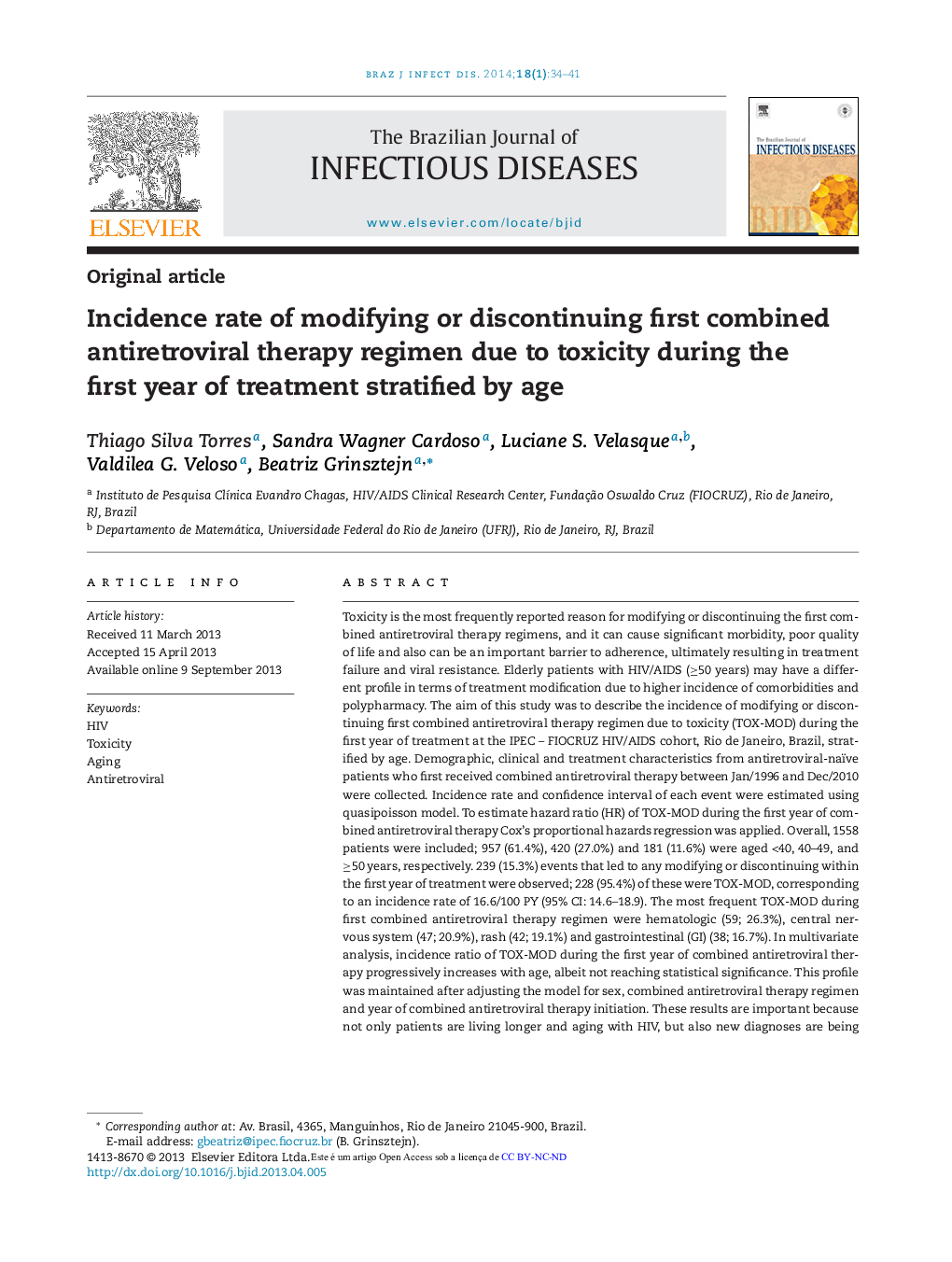| Article ID | Journal | Published Year | Pages | File Type |
|---|---|---|---|---|
| 3343977 | The Brazilian Journal of Infectious Diseases | 2014 | 8 Pages |
Toxicity is the most frequently reported reason for modifying or discontinuing the first combined antiretroviral therapy regimens, and it can cause significant morbidity, poor quality of life and also can be an important barrier to adherence, ultimately resulting in treatment failure and viral resistance. Elderly patients with HIV/AIDS (≥50 years) may have a different profile in terms of treatment modification due to higher incidence of comorbidities and polypharmacy. The aim of this study was to describe the incidence of modifying or discontinuing first combined antiretroviral therapy regimen due to toxicity (TOX-MOD) during the first year of treatment at the IPEC – FIOCRUZ HIV/AIDS cohort, Rio de Janeiro, Brazil, stratified by age. Demographic, clinical and treatment characteristics from antiretroviral-naïve patients who first received combined antiretroviral therapy between Jan/1996 and Dec/2010 were collected. Incidence rate and confidence interval of each event were estimated using quasipoisson model. To estimate hazard ratio (HR) of TOX-MOD during the first year of combined antiretroviral therapy Cox's proportional hazards regression was applied. Overall, 1558 patients were included; 957 (61.4%), 420 (27.0%) and 181 (11.6%) were aged <40, 40–49, and ≥50 years, respectively. 239 (15.3%) events that led to any modifying or discontinuing within the first year of treatment were observed; 228 (95.4%) of these were TOX-MOD, corresponding to an incidence rate of 16.6/100 PY (95% CI: 14.6–18.9). The most frequent TOX-MOD during first combined antiretroviral therapy regimen were hematologic (59; 26.3%), central nervous system (47; 20.9%), rash (42; 19.1%) and gastrointestinal (GI) (38; 16.7%). In multivariate analysis, incidence ratio of TOX-MOD during the first year of combined antiretroviral therapy progressively increases with age, albeit not reaching statistical significance. This profile was maintained after adjusting the model for sex, combined antiretroviral therapy regimen and year of combined antiretroviral therapy initiation. These results are important because not only patients are living longer and aging with HIV, but also new diagnoses are being made among the elderly. Prospective studies are needed to evaluate the safety profile of first line combined antiretroviral therapy on elderly individuals, especially in resource-limited countries, where initial regimens are mostly NNRTI-based.
